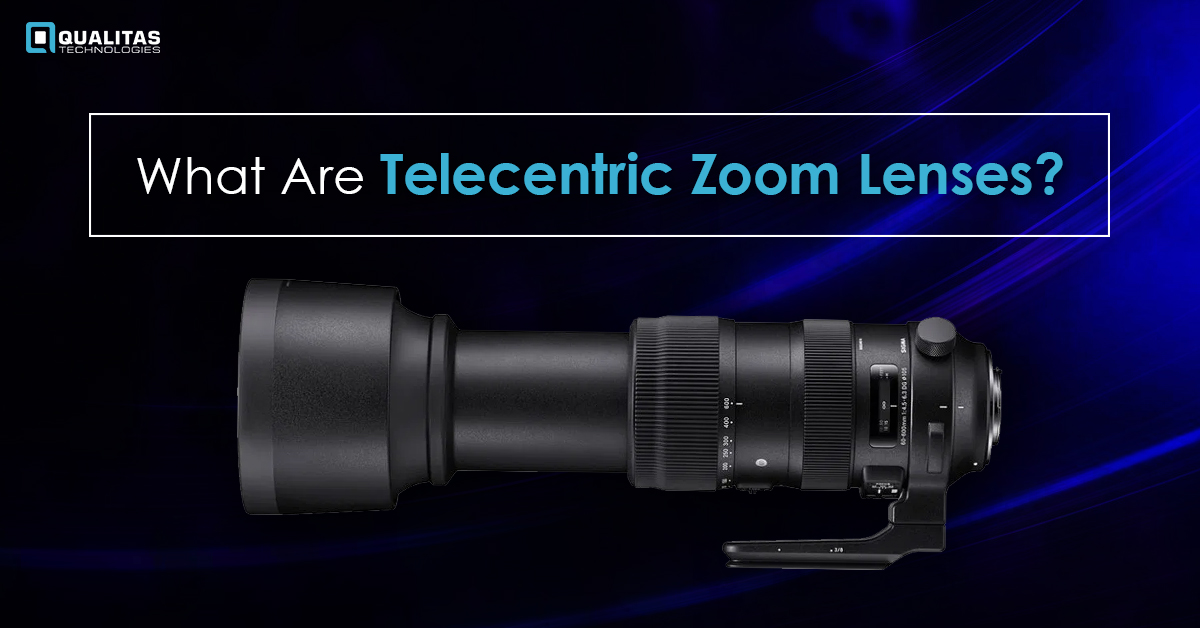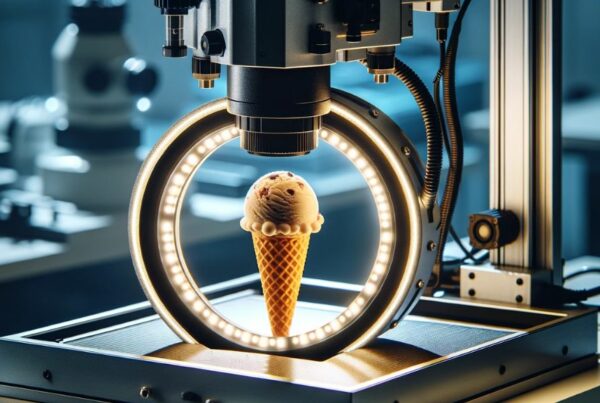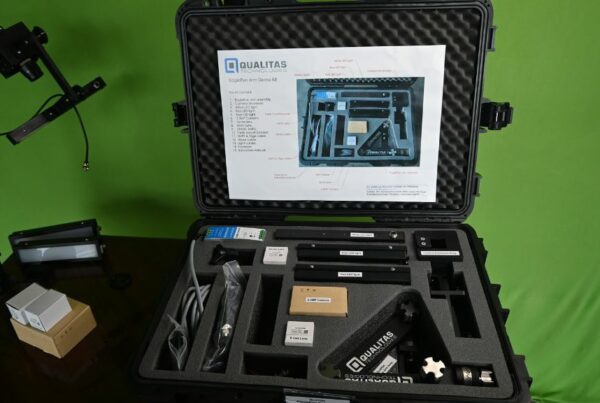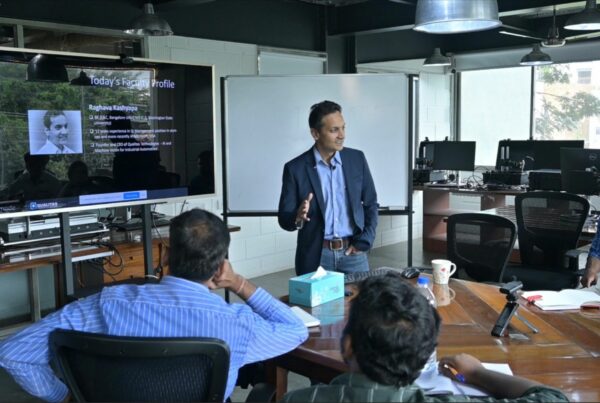
Introduction to Telecentric Lens
In precision-driven industries like automotive and electronics, a vast range of components with complicated dimensions have to be imaged accurately. For vision measuring machines that heavily rely on the suitability of the captured image to function optimally, this accuracy is of paramount importance. Conventional lenses may produce distorted and incompatible images for such vision measuring machines. To overcome such distortions and achieve peak performance in their vision measuring systems, system integrators opt for telecentric lenses.
Telecentric lens is a kind of compound lens used extensively in modern-day vision measuring machines to make objects appear to be of the same size irrespective of their distance from the telecentric camera. Telecentricity can be comprehended as a means of determining how the value of magnification of an object changes inside the field of view (FOV) with varying object distances.
The three prime categories of telecentric lenses are as follows:
- Object-space telecentric lens: The entrance pupil is located at infinity
- Image-space telecentric lens: The exit pupil is located at infinity
- Double telecentric lens: Both pupils are located at infinity
Telecentric lenses are ideal for vision measuring systems because conventional lenses cannot accurately image objects that are off-axis to the lens or present at different distances from the lens. Magnification error and viewing-angle error are inherent in conventional lenses, and these perspective distortions can lead to significant interpretation issues for the software.
Also, Read PARTS OF A MACHINE VISION SYSTEM
Applications of Telecentric Lenses
The telecentric lens is ideal for most dimensional measurement imaging applications. Since vision measuring systems analyze the image captured via the machine vision lens, acquiring stable and accurate images is imperative to obtain meaningful results. Thus, precise and repeatable measurements must be very consistent. The telecentric zoom lens provides that extra layer of precision to vision measuring systems. Because a telecentric zoom lens is capable of minimizing or even eliminating the following problems, it finds an integral place in the development of high accuracy gauging applications:
- Perspective errors
- Image distortion
- Change in magnification due to change in position
- Lighting geometry often causes object edge position uncertainty
- Poor image resolution
Since telecentric lenses effectively mitigate these issues, they become ideal for many other applications like metrology, CCD-based measurement, and microlithography.
Also, Read Choosing The Correct Lens For a Machine Vision Project
Advantages of Telecentric Lenses
- Eliminates parallax or perspective errors
Perspective or parallax errors can also be remedied by the use of a telecentric lens in the place of the traditional machine vision lens. In the actual world, closer objects appear relatively larger than those farther away because the human eye experiences angular magnification. Thus, the magnification of the object changes with its distance from the lens. The same issue ails conventional cameras. However, telecentric lenses optically correct this parallax error by having a constant, non-angular field of view so that the objects remain the same perceived size irrespective of their distance from the machine vision lens.
For instance, when an object like a cylindrical cavity is imaged using conventional machine vision lenses, the top and bottom circular edges are seen as concentric, and the inner walls of the cylinder are imaged. On the other hand, by using a telecentric camera, the bottom edge and inner walls disappear, and the telecentric lens generates a 2D view of a 3D object. This makes the vision measuring machine work much like CAD software. Conclusively, in vision measuring systems where measurements are critical, using a telecentric lens is a must.
- Constant magnification
Even if an object moves slightly within the depth of field of a conventional machine vision lens system, there will be an associated change in the magnification. Earlier the magnification changes due to object displacement were calibrated by using an additional camera system or a depth sensor tracking the distance between the machine vision lens and the object. Telecentric cameras can considerably reduce or even completely eliminate such magnification changes and, thus, eliminate the need for any additional camera and the pre-processing of the image data that may otherwise be necessary.
Telecentricity is the term used to determine how the magnification of an object alters with the distance within the field of view (FOV). Since telecentric lenses act as if they have infinite focal length, magnification remains independent of object distance. Although objects closer or farther from the telecentric camera may vary in focus, the image size of the object remains constant.
- Low distortion
Regular lenses often deliver images with around 1-2% distortion, whereas telecentric lenses have only about 0.1% distortion. The typical lens has either a “Barrel” or “Pincushion” distortion. In barrel distortion, the image magnification decreases with increasing distance from the optical axis and vice-versa in pincushion distortion. Low distortion becomes crucial in situations where accuracy is concerned. Telecentric cameras effectively reduce both barrel and pincushion distortion. While there’s truth in the fact that distortion can be calibrated out of images to enhance the accuracy to some extent, the parallax will still cause errors. With telecentric lenses, the measurement procedures can run faster because there is lesser computing involved and lower CPU load which translates to augmented net system throughput.
Also, Read PARAMETERS FOR LENS SELECTION
Conclusion
Irrefutably the ability to quickly accomplish repeatable, high accuracy measurements is essential to maximize the performance of many vision measuring machines. For such systems, telecentric lenses deliver the highest possible accuracy. In this article, we discussed the unique performance characteristics of telecentric lenses, the shortcomings of the conventional machine vision lenses, and how telecentricity can impact a machine vision application’s performance.





